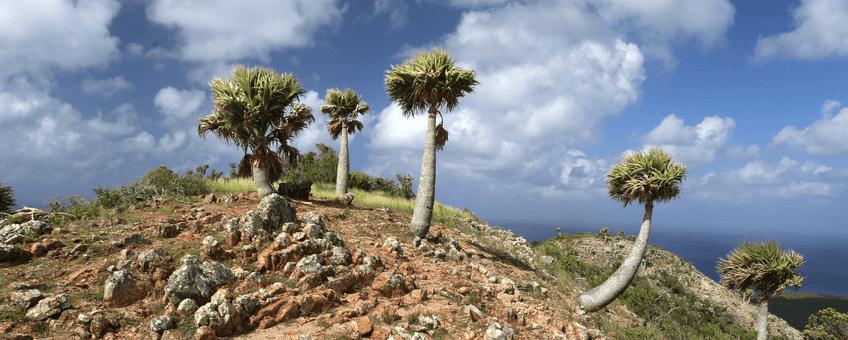
Hidden population of Curaçao Kabana palm discovered
Carmabi, Dutch Caribbean Nature Alliance (DCNA), Wageningen University & ResearchCuraçao Kabana palms (Sabal antillensis) stand out with their curved, bare trunks and can live for an exceptionally long time. Intensive field research utilizing modern techniques has unveiled hidden palms in the Christoffelpark, expanding the natural distribution range of the rare Kabana beyond previous assumptions.
Last year, during fieldwork on the Christoffelberg, André van Proosdij (WUR) and Erik Houtepen (CARMABI) spotted a palm on the eastern slope of the Christoffelberg from a considerable distance. Although unreachable from the scientists' location, the use of binoculars quickly confirmed it to be a Kabana. This discovery is noteworthy as Kabana was previously only known from hills west of the Christoffelberg. Soon after, rumors surfaced about palms on the Christoffel, though without specific location details. This week, Houtepen and Van Proosdij, assisted by drone imagery and binoculars, embarked on a journey to locate the particular palm. Scaling the steep, challenging eastern slope, far from roads and trails, they discovered five healthy, young specimens. There may be more in the vicinity, requiring further exploration. The palms appear healthy, aged between 20 and 50 years, and have not yet produced flowers or fruits.
The history and origin of these specimens remain unknown. An expansion of the western population eastward seems plausible but is not logical. After all, for seeds to spread in that direction, they would have to overcome the strong trade winds and traverse over the top of the Christoffelberg. It is more likely that small numbers of Kabana palms have always grown on the east side of Christoffel but had gone unnoticed until now. Intensive drone-assisted research of the area unveiled these long-hidden plants in the Christoffelpark. Scientists have collected DNA to investigate the genetic relationship with the western population.
The palms are found in an area covering approximately 8 square kilometers, mostly within the Christoffelpark. The newly discovered population represents an expansion of about 15 percent of the known distribution area in the eastward direction. In the initial count of Kabana palms in 1979, only 323 adult specimens were recorded. In the early '90s, numerous goats were removed from the Christoffelpark. This made an end to prolonged overgrazing and the natural vegetation has made a spectacular recovery. The Kabana population has also grown significantly since then, numbering over 1000 now. The Curaçao Kabana palm stands as an example of the successful restoration of a rare plant species in the Christoffelpark.
Text: DCNA, Carmabi and Wageningen University & Research
Pictures: André van Proosdij


